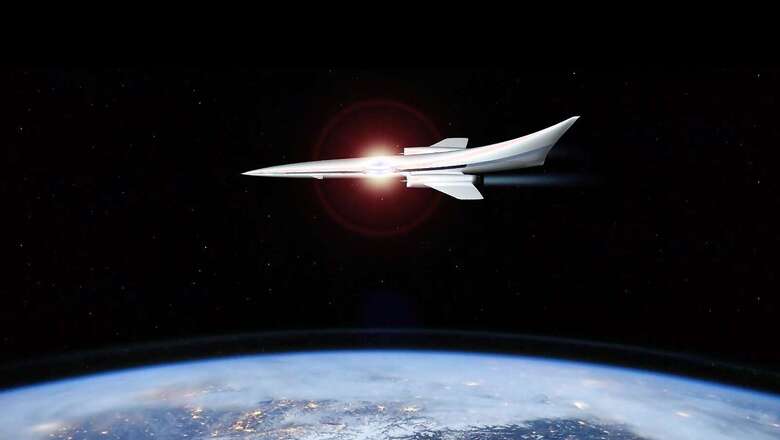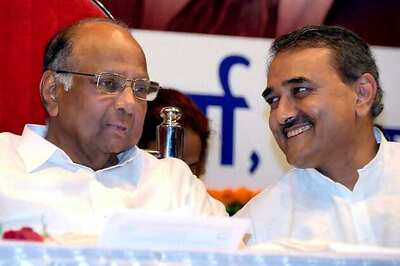
views
In 2015, when Union Minister of State (Independent Charge) Science & Technology Jitendra Singh was asked in Parliament if India has a strategic plan in place to explore space tourism in the future, he replied with a terse ‘No’. The country that was celebrating the second anniversary of the successful launch of its Mars Orbiter Mission (MOM) was not planning to develop any technology for space tourism, he clarified further.
Seven years later, the government has unlocked the space sector for private investment and is keen on bringing space reforms to make India a competitive space market. With preparations underway for its maiden human spaceflight mission – Gaganyaan – it has now also opened itself to the idea of venturing into space tourism in the near future.
“ISRO is in the process of developing indigenous capabilities towards space tourism through the demonstration of human space flight capability to Low Earth Orbit (LEO),” Singh told Parliament earlier this week.
Space tourism to be possible very soon ????@isro is in the process of developing indigenous capabilities towards space tourism through the demonstration of human space flight capability to Low Earth Orbit (LEO): Union Minister @DrJitendraSingh pic.twitter.com/6tfjUcBRyP— PIB India (@PIB_India) July 24, 2022
For a country that is yet to successfully send humans into space all by itself and bring them safely back to Earth, the announcement looks implausible at first but perhaps far-sighted, considering the direction that private space sector is moving globally.
To break it down further, the LEO being targeted is an orbit just above the Earth’s atmosphere ranging from anywhere between 160 to 2,000 kiolmetres above sea level. It also houses the International Space Station (ISS), which orbits at an altitude of roughly 400 kilometres.
In case of space tourism, sub-orbital flights have gained particular global interest. These flights take the spacecraft to a height of 100 kilometres above the sea level — close to the Karman line where the Earth ends and outer space starts — but do not go far enough to escape the Earth’s atmosphere and eventually descend back to Earth. To give a comparison, normal commercial planes fly at a height of not more than 12 kilometres from mean sea level.
EXPANDING BUSINESS INTO SPACE
The elite fantasy of witnessing the space in all its glory is powering companies like the Blue Origin Space flight to double its commercial flights this year. The company helmed by Amazon founder Jeff Bezos launched six tourists on its fourth space mission in March early this year. US-based Virgin Galactic too plans to restart its space tourism missions soon, and then there is SpaceX.
For India, the focus so far has been on giving additional impetus to its existing space missions to make them self-sufficient. The cost of access to space is a major deterrent in space exploration and space utilisation and Indian Space Research Organisation (ISRO) aspires to be the low-cost game changer for satellite missions.
In the last few years, the agency has experimented with reusable launch vehicles to bring down the overall cost of their missions. In February 2017, its workhorse Polar Satellite Launch Vehicle successfully launched 103 co-passenger satellites, weighing 1378 kgs — 96 from the USA alone. In its latest launch, it repurposed the fourth stage of its rocket so it could find its own position in space after inserting the main satellite into orbit and host some cost-effective scientific experiments of young start-ups.
ISRO is also working to establish its capabilities in space docking experiments (SPADEX) which allow two spacecraft/satellites to join with each other and enable any transfer between the two.
But a human spaceflight is a different challenge altogether, and Chandrayaan-2 — though vastly different in objectives — has shown that it is not going to be easy. India’s prospects in space tourism depend much on the success of its mega mission Gaganyaan but it may be a significant step in realising the full commercial potential of its space capabilities, contend experts.
“It is not just tourism per se. There are several companies across sectors like pharmaceuticals who are now who are interested in this near-vacuum space and looking to tie up to conduct microgravity experiments. So, even if India’s plans look ambitious, these are crucial steps in ensuring business continuity in space sector. With the announcement, government has perhaps made it clear that it is open to investing in the idea,” says Chaitanya Giri, a Space Tech Consultant with Research and Information System for Developing Countries (RIS).
LONG RUN
Any which way, India’s journey to realising its potential in space is a long, and arduous one. The space sector has been trying hard to bring in private investment, and a number of start-ups have emerged over the last few years.
The Department of Space (DOS) is also in the process of drafting a comprehensive, integrated Space Policy to provide direction to the activities of private Indian space industry.
Dr Singh also informed Parliament that Indian National Space Promotion and Authorization Centre (IN-SPACe), an independent nodal agency under DOS, is promoting active participation of private sector in carrying out end-to-end space activities, which includes space tourism as well. It will come up with mechanisms to enable sharing of technical facilities and expertise available across ISRO Centres with private entities, he said.
ISRO is also pursuing international cooperation and relations with 61 countries in varied domains of space activities.
While space tourism may be the direction the whole world is moving in, there is clearly a long road ahead before India gets ready to dive into one. With timeline for Gaganyaan delayed by the pandemic, and now pushed farther into 2024 at least, a lot will depend on how well ISRO proves itself as a reliable and safe partner for travelling into space.
Read all the Latest News and Breaking News here



















Comments
0 comment